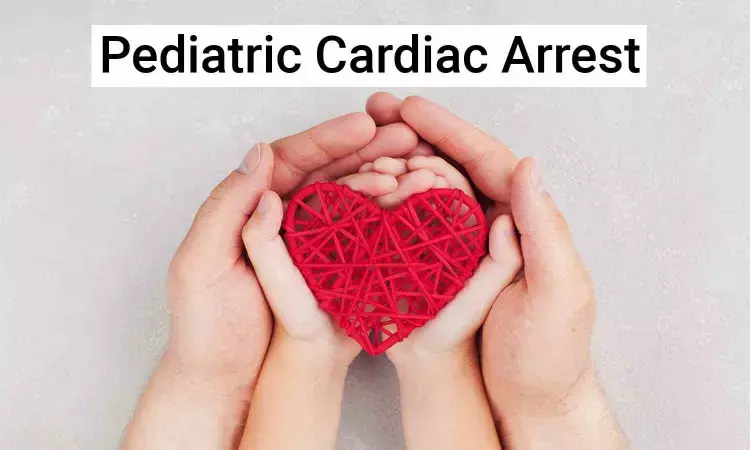- Home
- Medical news & Guidelines
- Anesthesiology
- Cardiology and CTVS
- Critical Care
- Dentistry
- Dermatology
- Diabetes and Endocrinology
- ENT
- Gastroenterology
- Medicine
- Nephrology
- Neurology
- Obstretics-Gynaecology
- Oncology
- Ophthalmology
- Orthopaedics
- Pediatrics-Neonatology
- Psychiatry
- Pulmonology
- Radiology
- Surgery
- Urology
- Laboratory Medicine
- Diet
- Nursing
- Paramedical
- Physiotherapy
- Health news
- Fact Check
- Bone Health Fact Check
- Brain Health Fact Check
- Cancer Related Fact Check
- Child Care Fact Check
- Dental and oral health fact check
- Diabetes and metabolic health fact check
- Diet and Nutrition Fact Check
- Eye and ENT Care Fact Check
- Fitness fact check
- Gut health fact check
- Heart health fact check
- Kidney health fact check
- Medical education fact check
- Men's health fact check
- Respiratory fact check
- Skin and hair care fact check
- Vaccine and Immunization fact check
- Women's health fact check
- AYUSH
- State News
- Andaman and Nicobar Islands
- Andhra Pradesh
- Arunachal Pradesh
- Assam
- Bihar
- Chandigarh
- Chattisgarh
- Dadra and Nagar Haveli
- Daman and Diu
- Delhi
- Goa
- Gujarat
- Haryana
- Himachal Pradesh
- Jammu & Kashmir
- Jharkhand
- Karnataka
- Kerala
- Ladakh
- Lakshadweep
- Madhya Pradesh
- Maharashtra
- Manipur
- Meghalaya
- Mizoram
- Nagaland
- Odisha
- Puducherry
- Punjab
- Rajasthan
- Sikkim
- Tamil Nadu
- Telangana
- Tripura
- Uttar Pradesh
- Uttrakhand
- West Bengal
- Medical Education
- Industry
Epinephrine as good as epinephrine and vasopressin combo in pediatric CPR: study

Return of spontaneous circulation (ROSC) is the initial therapeutic goal in cardiac arrest and is a measure of initial success of CPR. Cardiopulmonary resuscitation involves chest compressions, manual ventilation and vasopressor drugs at appropriate intervals. Pediatric advanced life support(PALS) guidelines recommend epinephrine as the first line vasopressor in pediatric cardiac arrest but the recent advanced cardio-vascular life support guideline recommends that Vaso-pressin, combined with epinephrine, may be considered in adult cardiac arrest resuscitation.
Team of Pediatricians from JIPMER,Puducherry conducted a study to compare the efficacy of epinephrine plus vasopressin vs epinephrine plus placebo in the pediatric intensive care unit (PICU) cardiopulmonary resuscitation (CPR).
In this randomized double-blinded controlled trial a total of 90 children(45 in each group) aged one to 13 years who required CPR during PICU stay were enrolled. Patients in whom vascular access was not available or return of spontaneous circulation (ROSC) was achieved by defibrillation without epinephrine were excluded. Also children with cardiac arrest outside PICU were not enrolled. All patients received CPR in accordance with the PALS-2015 guidelines established by the American Heart Association (AHA). The proportion of patients who achieved return of spontaneous circulation(ROSC) was the primary outcome measure and the survival rate,functional status post-resuscitation, need for organ transport were secondary outcome measures.
Key findings of the study are:
-The most common (80%) arrest rhythm was pulseless electrical activity (PEA). Hemodynamic abnormality (67.8%) was the most common event that led to arrest, followed by respiratory events (23.3%).
-The median (IQR) duration of CPR was similar between groups [18 (10-30) vs 15 (6–30) minutes; P=0.96].
-The proportion of patients who achieved ROSC, time to achieve ROSC and the proportion of patients requiring ongoing CPR was similar between two groups during the first 30 minutes of CPR.
-Researchers found that the number of patients who required CPR beyond 30 minutes was also similar between two groups and none achieved ROSC.
-Mean (SD) diastolic blood pressure (DBP) was similar in epinephrine plus vasopressin group as compared to epinephrine plus placebo group during CPR.
The outcome of a pediatric cardiac arrest depends upon many factors, including the initial presenting rhythm, the place of cardiac arrest, early recognition of the arrest, and the underlying conditions.
At present, only a limited number of vasopressors are available for use in pediatric CPR, and insufficient data supporting their use [2]. The pediatric guidelines were extrapolated from adult clinical trials and animal studies.
The AHA recommends considering E-CPR during in-hospital pediatric cardiac arrest, when standard resuscitation has failed, especially in a potentially reversible cause of cardiac arrest.
Authors conclude-" The study concludes that a combination of epinephrine and vasopressin did not improve the rate of return of spontaneous circulation, survival, and favorable neurological outcomes in pediatric intensive care unit cardiac arrest resuscitation as compared to epinephrine and placebo".
Source: Sheriff A, Rameshkumar R, Chidambaram M, Maulik K, Kumar RS, Jamal A, Bhowmick R, Biswal N, Mahadevan S. Epinephrine Plus Vasopressin vs Epinephrine Plus Placebo in Pediatric Intensive Care Unit Cardiopulmonary Resuscitation: A Randomized Double Blind Controlled Clinical Trial. Indian Pediatr. 2021 Jul 15;58(7):624-630.
Dr Kamal Kant Kohli-MBBS, DTCD- a chest specialist with more than 30 years of practice and a flair for writing clinical articles, Dr Kamal Kant Kohli joined Medical Dialogues as a Chief Editor of Medical News. Besides writing articles, as an editor, he proofreads and verifies all the medical content published on Medical Dialogues including those coming from journals, studies,medical conferences,guidelines etc. Email: drkohli@medicaldialogues.in. Contact no. 011-43720751


